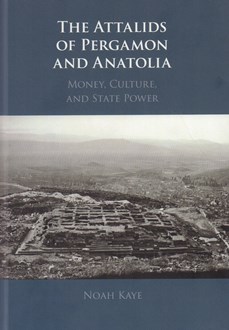The Attalids of Pergamon and Anatolia : money, culture, and state power / Noah Kaye.
Yer Numarası
A.IX/7185
ISBN
9781316510599 (hardback)
9781009017626 (paperback)
9781009038935 (epub)
9781009017626 (paperback)
9781009038935 (epub)
Dil Kodu
İngilizce
Kütüphane
Türk Tarih Kurumu Kütüphanesi
Yazar
Basım Bildirimi
First published.
Yayın Bilgisi
Cambridge, United Kingdom ; New York, NY : Cambridge University Press, 2022.
Fiziksel Niteleme
xviii, 444 sayfa : resim (kimi renkli), harita, plan, grafik ; 25 cm.
Genel Not
İndeks s. 425-444.
Bibliyografi, vb. Notu
Bibliyografya s. 370-424.
İçindekiler Notu
Introduction -- Eating with the tax-collectors -- The skeleton of the state -- The king's Money -- Cities and other civic organisms -- Hastening to the gymnasium -- Pergamene panhellenism -- Conclusion -- Appendix of Epigraphical Documents.
Özet, vb.
“In the sunny, austere central hall of the Pergamon Museum in Berlin, wrapping around the room's walls like a serpent, then rising halfway to the ceiling on marble steps, stands a strident, if also fragmentary statement of empire. It is an unfinished wedding cake of a building. Tourists recline languidly on its ascent, like guests with nowhere to sit. The room is just too small; it is overtaken by the object on display ̣- The Great Altar of Pergamon. The Altar, with its two sculptural friezes, the outer, depicting the Battle of Gods and Giants, the inner, the tale of Telephos, son of Herakles and heroic ancestor of the Attalid dynasty, was discovered in 1871, the year in which the Second German Empire was born. The engineer Karl Humann stumbled upon the marble fragments while building infrastructure for Ottoman Turkey, making the Altar as we know it a pure product of German, French and British competition for influence in the Middle East. Today, Turkey has regained confidence, and officials from the Prussian Cultural Heritage Foundation expect Ankara to ask for it back” -- Yayıncı.


